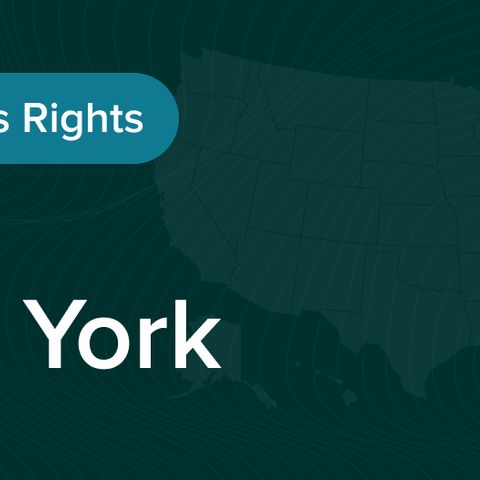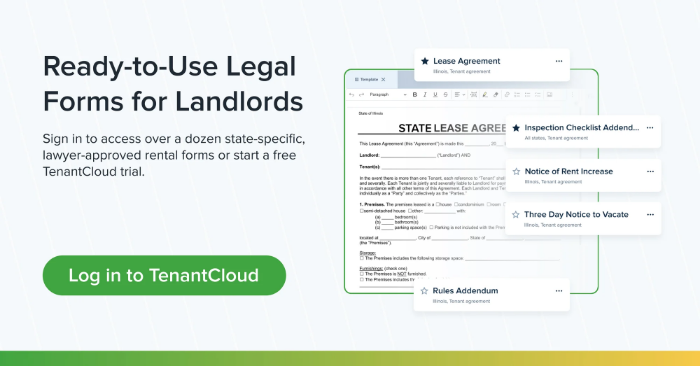A squatter refers to an individual who resides on a property or land parcel without obtaining explicit permission from the rightful owner, occasionally claiming legal ownership over the premises. In New York State, squatting presents a legitimate issue of concern for numerous property owners.
New York State has one of the most tolerant adverse possession laws in the United States, which enables squatters to possibly acquire legal ownership of property that they occupy without the owner's consent.

Protecting your property from unauthorized occupation is paramount. Hence, gaining a thorough comprehension of New York's squatter rights legislation is essential for proactive safeguarding.
Let's delve into the specifics below.
Understanding New York Squatters Rights Law
Who Qualifies as a Squatter in New York City?
To establish a successful claim for adverse possession following NY RPA Code §511, a squatter in New York must meet the following criteria:
- Occupy the property continuously:
- for a minimum of 10 years if the owner lives in the same county;
- 30 years if the property owner lives outside the county. - Maintain the property as their primary residence.
- Make improvements or repairs to the property.
- Pay any property taxes owed during their occupation.
- Possess the color of title.
"Color of title" denotes the possession of property without possessing all required ownership documents, such as an official deed. In New York, squatters must have possessed color of title throughout the entire ten-year period of continuous occupation or actual possession to initiate a valid adverse possession claim. Additionally, squatters may be obligated to fulfill property tax obligations for the land they aim to claim.
| Requirement | Description |
|---|---|
| Adverse/Hostile Possession | The squatter's possession must be hostile, meaning it is without the owner's permission and against the owner's interests. |
| Actual Possession | The squatter must physically occupy and use the property as their own, without the owner's permission, for a specified duration. |
| Open and Notorious Possession | The squatter must openly and obviously use the property, without attempting to conceal their presence from neighbors or others. |
| Exclusive Possession | The squatter must have exclusive control over the property, not allowing anyone else to use or occupy it. |
| Continuous Possession | The squatter must continuously possess and occupy the property for a specific uninterrupted period, typically around 10 years in most states. |
New York Adverse Possession Claims
New York City has its own set of regulations regarding squatters' rights, which allows individuals to claim tenant's rights after occupying a property continuously for just 30 days (NYC Code § 26-521). This short period of possession has caused frustration among landlords and is a significant concern for property owners in the city.
For landlords with vacant properties in New York City, it is imperative to conduct regular checks for squatters (or hire a property manager to perform these checks) every few weeks to avoid any legal complications. Failure to do so could result in a squatter initiating a quiet title action, which would establish their rights through the courts. This requires navigating a complex and costly legal process to evict them. As with any real estate dispute, squatter disputes require immediate attention and prompt action.
How Squatters Can Gain Legal Ownership in New York
If a squatter meets the criteria for New York squatters' rights and the general principles of squatters' rights, they can initiate a claim for adverse possession or pursue a legal action known as "quiet title." Quiet title serves as the legal mechanism for asserting possession and ownership rights over a specific property.
Note: Filing an adverse possession claim does not guarantee success.
There are numerous hurdles to overcome in winning an adverse possession case. The adverse possessor must:
| Hurdle | Description |
|---|---|
| Compile Sufficient Evidence | Gather evidence supporting the adverse possession claim, such as receiving mail addressed to the property, property tax receipts, and proof of property improvement. |
| File Quiet Title Complaint with the Court | Initiate a legal action by filing a quiet title complaint with the court, outlining the claim for possession and ownership rights over the property. |
| Participate in Hearing with Property Owner and Judge | Attend a hearing alongside the property owner, presenting the case for adverse possession before a judge, and engaging in legal proceedings. |
| Persuade Judge to Meeting State Requirements | Convince the judge that all state requirements for adverse possession, as outlined in New York's squatters' rights laws, have been fulfilled to support the claim. |
| Obtain Judgment for Adverse Possession to Perfect Title | Secure a judgment for adverse possession from the court, thereby finalizing the legal recognition of possession and ownership rights over the property. |
These steps outline the challenging process squatters must navigate to establish adverse possession rights in New York.
The Eviction Process in New York
In New York, similar to most other states, the removal of a squatter requires following the complete eviction process. Treating the adverse possessor akin to any other tenant ensures the invalidation of any adverse possession claim they might attempt. Upon discovering a squatter occupying your property, it is imperative to issue proper notice, file a formal eviction complaint in court, and attend or have legal representation at the ensuing hearing to lawfully expel the squatter.
The initial step entails serving the squatters with a written notice to vacate the premises. The notice period varies based on the type of property:
| Notice Period | Property Type |
|---|---|
| 10 days | Property subject to a contract or lease |
| 30 days | Property occupied for over 30 days without a lease |
| 10 days | Property occupied for less than 30 days |
The notice must explicitly state the occupants' obligation to vacate the property by a specified date. Proper service typically involves dispatching law enforcement or a process server to deliver the notice directly to the squatters.
Related: New York Eviction Laws: The Process and Timeline in 2024
Below is an outline of the New York eviction process for squatters:
- The property owner initiates by filing a formal eviction notice. In New York, this entails a ten-day notice to quit for squatters and other non-tenants.
- Following the expiration of the ten-day notice, property owners proceed to file a complaint for eviction, known as a Petition for Special Proceedings, with the relevant court having jurisdiction over evictions in the property's location. This may include:
- New York County Court
- The court of police justice of the village
- New York Justice Court
- A court of civil jurisdiction in a city
- New York District Court
- Subsequently, the court issues a summons (or Notice of Petition) summoning the squatter to appear in court, to be served by the sheriff or any other non-party of age.
- Both parties must attend the court hearing to present evidence of lawful ownership.
- Upon verification of legal ownership, the court issues a Warrant for Possession, granting the squatter 14 days to vacate the premises.
- Failure to comply within 14 days empowers the sheriff to forcibly remove the squatter.
Squatters Rights Laws by Region
Squatters' state law in New York varies across different regions, including New York City, Long Island, and Westchester County. The primary difference in these laws is based on the adverse possession laws, which vary depending on the municipality.
New York City
The New York City Administrative Code outlines the adverse possession laws. Squatters must occupy a property continuously for ten years to be eligible to claim adverse possession. This timeframe is shorter than the state requirement, reflecting the city's housing issues like squatting. Squatters in NYC must also pay all property taxes during the 10-year occupation period to establish adverse possession. Continuous occupation is also critical, and property owners cannot temporarily evict squatters to disrupt the continuity of occupancy.
Long Island
Long Island municipalities follow the adverse possession laws of New York state. To establish a claim to ownership, squatters must reside on the property for 30 years. They must also demonstrate that their possession was "Hostile, Actual, Exclusive, Open & Notorious, and Continuous" throughout the entire 30-year period. While paying property taxes can support their claim, it is not strictly mandated.
Westchester County
Similarly to Long Island, most municipalities in Westchester County follow the adverse possession laws of New York state. Squatters must occupy a property continuously for 30 years to assert an ownership claim. However, certain Westchester municipalities, such as Mount Vernon, have truncated the requirement to just 15 years of continuous possession. It's necessary to consult your municipality to confirm the adverse possession requirements.
Frequently Asked Questions
Can you evict a squatter in New York State?
In New York State, property owners can evict squatters by serving them with a notice to vacate and filing an eviction lawsuit if they do not comply. Law enforcement can assist in removing squatters after a court order is obtained.
What is the adverse possession law in New York City?
For adverse possession claims in New York City, the squatter must occupy the property continuously, openly, notoriously, exclusively, and hostilely for a period of 10 years. Additionally, they must also pay property taxes during this time to make a valid claim for ownership under adverse possession.
How long does it take to evict a tenant in NY?
The time it takes to evict a tenant in New York varies based on factors such as the reason for eviction, court backlog, and tenant contestation. Generally, the process can take anywhere from a few weeks to several months from serving the notice to vacate to obtaining a final eviction order from the court.



